Chipping does not have to be complicated. With a few adjustments and techniques, you can improve your chipping consistency and get the ball close to the hole, no matter where you are around the green.
I will break down chipping into three simple steps: using the bounce, maintaining a natural triangle, and getting through the rough. These steps will help you refine your technique and build confidence in your short game.
Mastering chipping technique in golf is essential for every player aiming to lower their score. Just like how the best ball enhances your golf shot, the right approach to chipping technique in golf can turn a challenging lie into a scoring opportunity.
Accessories for Chipping
To further enhance your chipping practice, consider using various golf accessories. A Golf Towel is essential for keeping your clubs clean and dry, ensuring optimal performance. Keep your Golf Bag organized with a selection of clubs and other accessories.
High-quality Golf Balls are crucial for consistent performance, and using Golf Training Aids can help refine your technique. Practice on a Chipping Mat to simulate different lies and improve your accuracy.
Golf Alignment Sticks are excellent tools for ensuring proper setup and alignment during practice. Additionally, Golf Chipping Nets provide a convenient target for honing your chipping skills. Incorporating these accessories into your practice routine can significantly improve your short game.
Using the Bounce
One of the most common issues golfers face with chipping is the club digging into the turf. This often results in duffed shots and inconsistent performance.
The key to avoiding this problem is to use the bounce of the club effectively. Chipping technique in golf requires practice with the best golf balls and good golf shoes to maintain stability and control during your swing.
What is Bounce?
Bounce refers to the angle between the leading edge and the lowest point of the sole of the club. It helps prevent the club from digging into the ground, allowing it to glide or “bounce” off the turf.
Adjusting Your Setup
To utilize the bounce correctly, make a slight adjustment to your setup. Instead of letting the club lie flat on the ground, raise the handle so there is a bit of air underneath. This reduces the amount of friction and contact with the ground, decreasing the likelihood of the club digging in.
Here’s how to do it?
Stand Closer to the Ball: Ensure you are standing closer to the ball so that it is approximately under your eyes. This allows for better control and precision.
Raise the Handle: Elevate the handle of the club slightly. This adjustment increases the margin of error, making it easier to achieve consistent contact.
Maintain a Slight Forward Shaft Lean: Your clubs should be positioned about a third of the way back from vertical. This ensures the clubface makes contact with the ball first, utilizing the bounce effectively.
Ideal Club Positioning for Bounce Utilization
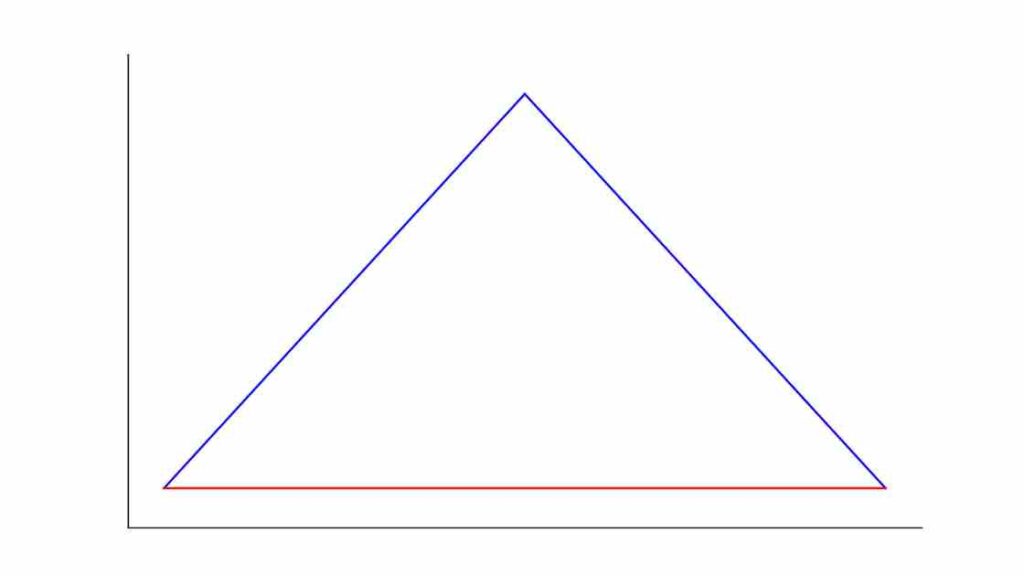
Maintaining a Natural Triangle
Another common mistake golfers make is holding their arms too rigidly, creating unnecessary tension. This tension reduces flexibility and increases the chances of mishits. The goal is to maintain a natural triangle between your arms and shoulders without excessive tension.
Finding Your Natural Hang
To achieve this, follow these steps:
- Relax Your Arms: Stand in your chipping posture and let your arms hang naturally. Notice the slight curvature in your arms.
- Connect Without Tension: Bring your hands together, maintaining the natural curvature. Avoid squeezing your arms or creating unnecessary tension.
- Focus on Your Core: Your chest and torso should drive the chipping motion. Keep your grip firm but your wrists and forearms supple.
Achieving a Natural Triangle

Getting Through the Rough
Chipping from the rough can be challenging, but the key is to maintain your technique and commit to the shot. Here’s how to ensure you get through the rough effectively:
- Apply Steps 1 and 2: Utilize the bounce and maintain a natural triangle.
- Focus on Your Upper Body: Ensure your chest and torso are leading the motion, not just your hands and arms.
- Commit to the Shot: Accelerate through the ball with confidence. Your belly button and chest should face the target at the end of the swing.
Proper Upper Body Movement
- Maintain a Stable Stance: Ensure your feet are shoulder-width apart and your weight slightly favoring your front foot.
- Relax Shoulders and Arms: Keep your shoulders relaxed to promote a smooth, controlled swing.
- Engage Core Muscles: Use your core to initiate the swing, providing stability and power.
- Rotate Hips and Torso: Initiate the swing by rotating your hips and torso together, ensuring they move as one unit.
- Keep Hands Ahead of the Ball: Maintain a forward hand position relative to the ball throughout the swing to control loft and distance.
- Follow Through Smoothly: Allow your upper body to follow through naturally after impact, ensuring a complete and balanced finish.
- Practice Tempo and Rhythm: Develop a consistent tempo and rhythm in your upper body movement to enhance control and accuracy.
- Maintain Eye Contact with the Ball: Focus on the ball throughout the swing to ensure proper alignment and contact.
- Avoid Over-Swinging: Keep your upper body movements controlled and avoid excessive force, focusing on technique over power.
- Seek Professional Guidance: Consider working with a golf instructor to refine your upper body movement technique for chipping.
Choosing the Right Club
Don’t always rely on your sand wedge or lob wedge for chipping. Sometimes, using a nine iron can be more effective, especially for bump and run shots. The shorter action of a nine iron allows for more control and fewer mistakes.
When strategizing for best ball play, mastering the chipping technique in golf becomes crucial for maintaining momentum and minimizing strokes.
Practice with a Nine Iron
Try chipping with a nine iron and notice the difference. The technique is similar, but the ball will pop up and roll out more consistently. This can be a great addition to your short game repertoire.
Club Selection for Chipping
| Club | Ideal Use Case |
| Sand Wedge | High lofted shots near the green |
| Lob Wedge | Short, high shots over obstacles |
| Nine Iron | Bump and run shots |
Additional information
| Club | Ideal Use Case | Characteristics |
| Sand Wedge | High lofted shots near the green | Loft typically ranges from 54-58 degrees, ideal for soft landings on greens and bunker shots. |
| Lob Wedge | Short, high shots over obstacles | Very high loft (typically 60-64 degrees) for clearing hazards or stopping quickly on greens. |
| Pitching Wedge | Versatile for medium-length chip shots | Moderate loft (typically 45-48 degrees), good for a variety of chip distances and heights. |
| Nine Iron | Bump and run shots | Lower loft (around 40-45 degrees), designed to roll out after hitting the ground, ideal for firm turf conditions. |
| Eight Iron | Longer bump and run shots | Slightly more loft than a Nine Iron, allowing for longer carry but still designed for roll after landing. |
Advanced Techniques and Drills to Enhance Your Short Game
Now that we’ve covered the fundamental steps to improve your chipping, let’s delve into some advanced techniques and drills. These exercises will help you further refine your skills, increase your confidence, and lower your scores.
Advanced Bounce Techniques
Using the bounce effectively is crucial, but there are advanced techniques that can help you fine-tune your chipping game even more.
Mastering the Forward Press
The forward press is a technique where you slightly press your hands forward before initiating the chipping motion. This helps in delofting the club and using the bounce more effectively.
Setup: Position yourself as described in the basic setup.
Forward Press: Slightly press your hands forward. This will engage the bounce and help prevent digging into the turf.
Execute the Shot: Maintain the forward press throughout the shot for a consistent strike.
Varying the Loft
Depending on the situation, you might need to adjust the loft of your club to achieve the desired trajectory and roll. Here’s how to vary the loft without changing your club:
- Open the Clubface: For higher loft, open the clubface slightly.
- Close the Clubface: For lower loft, close the clubface slightly.
- Maintain Bounce: Ensure that the bounce is still in play by adjusting your setup accordingly.
Adjusting Clubface for Loft Variation
| Desired Loft | Clubface Adjustment | Setup Adjustment |
| Higher Loft | Open Clubface | Slightly back in stance |
| Lower Loft | Close Clubface | Slightly forward in stance |
Enhancing the Natural Triangle
Maintaining a natural triangle is essential for a smooth chipping motion. Here are some drills to help you reinforce this technique.
The Towel Drill
The towel drill is an excellent way to ensure your arms stay relaxed and maintain the natural triangle.
- Place a Towel: Fold a towel and place it under your arms, connecting your upper arms to your chest.
- Chipping Motion: Perform your chipping motion while keeping the towel in place.
- Focus on Connection: Ensure your arms and chest move together, maintaining the natural triangle.
Towel Drill for Natural Triangle
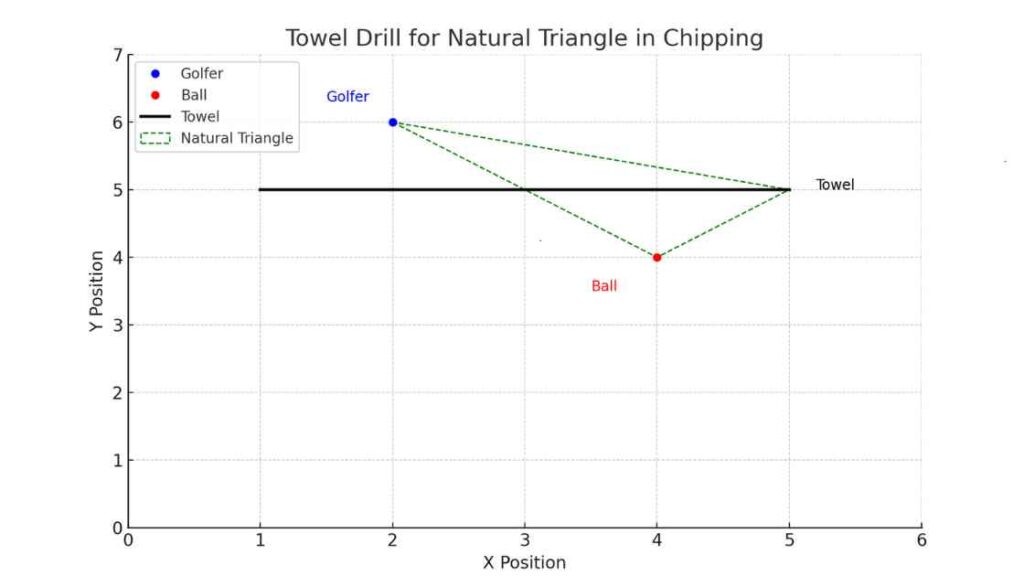
The Coin Drill
The coin drill helps you maintain a soft grip and avoid excessive tension.
- Place a Coin: Place a coin on the back of your trail hand (right hand for right-handed players).
- Chipping Motion: Perform your chipping motion without letting the coin fall.
- Focus on Soft Hands: This drill encourages a soft grip and reduces tension
Coin Drill for Soft Grip
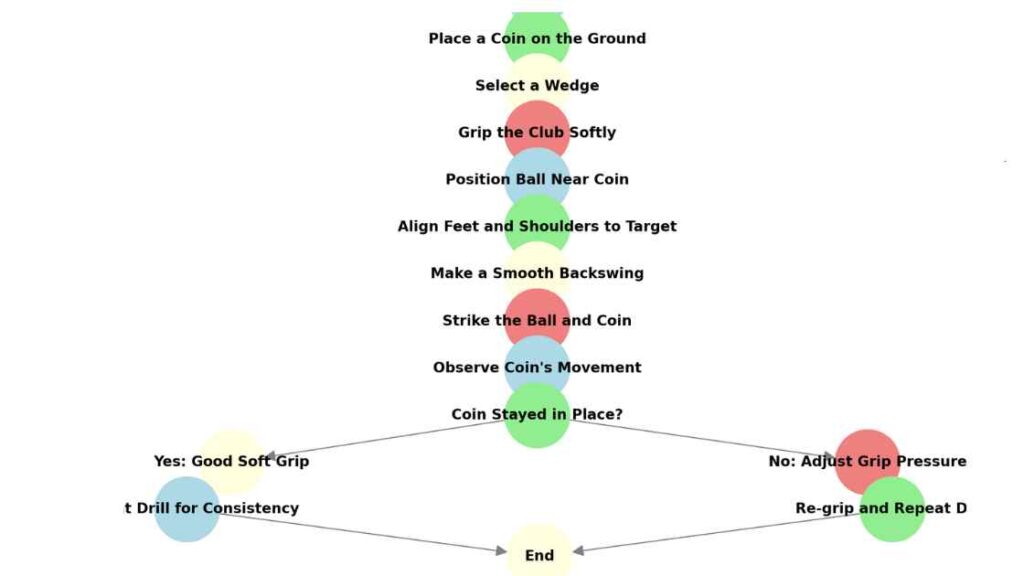
Committing to the Shot
Committing to the shot is vital, especially in challenging situations like the rough. Here are some drills to help you commit fully to each shot.
The Gate Drill
The gate drill improves your focus and ensures you commit to the shot.
Setup Two Tees: Place two tees in the ground, slightly wider than your clubhead.
Chipping Motion: Perform your chipping motion, aiming to swing the clubhead through the gate without touching the tees.
Focus on Accuracy: This drill helps you focus on accuracy and commit to a precise motion.
Gate Drill Setup
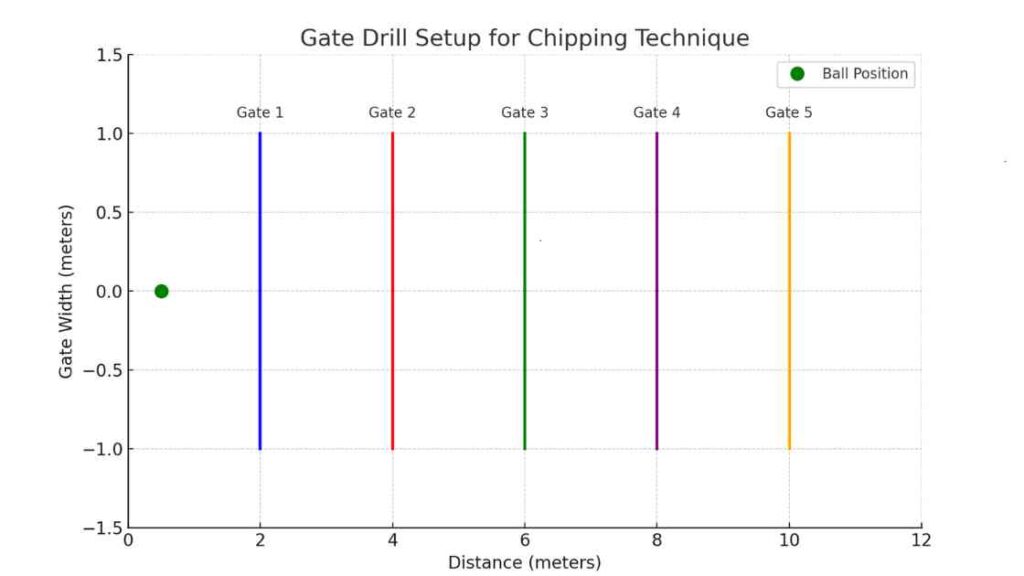
The Follow-Through Drill
The follow-through drill ensures you commit to the shot and maintain a proper finish.
- Visualize the Finish: Before starting the shot, visualize where your chest and belly button should be at the finish.
- Execute the Shot: Perform the chipping motion, focusing on reaching the visualized finish position.
- Check Your Finish: After the shot, check if your chest and belly button are facing the target.
Advanced Chipping Tips
In addition to the steps and drills, here are some advanced chipping tips to enhance your short game:
Use Different Clubs
Experiment with different clubs for various chipping situations. Each club offers different loft and roll characteristics, which can be advantageous depending on the shot required.
Clubs to Use for Chipping
- Sand Wedge: High loft, soft landing
- Lob Wedge: Very high loft, short distance
- Pitching Wedge: Medium loft, moderate roll
- Nine Iron: Low loft, significant roll
- Seven Iron: Very low loft, extensive roll
Practice with Purpose
Structured practice sessions can significantly improve your chipping skills. Focus on specific drills and set goals for each session.
Structured Practice Plan
| Day | Drill | Goal |
| Monday | Forward Press Drill | Achieve consistent contact |
| Wednesday | Towel Drill | Maintain natural triangle |
| Friday | Gate Drill | Improve accuracy |
| Sunday | Follow-Through Drill | Commit to the shot |
Elevating Your Short Game: Advanced Strategies and Tips
In the final part of this article, we will explore additional strategies and tips that will help you master the art of chipping and further elevate your short game. These advanced techniques focus on situational chipping, mental preparation, and fine-tuning your approach to ensure you can handle any challenge on the course.
Situational Chipping
Understanding how to adapt your chipping technique to different scenarios is crucial for consistency and confidence. Here are some advanced situational chipping strategies.
Chipping from Tight Lies
Tight lies can be tricky because there is very little grass between the ball and the ground. Here’s how to handle them:
Use Less Loft: Opt for a club with less loft, such as a pitching wedge or nine iron, to ensure a cleaner strike.
Shallow Angle of Attack: Make sure your angle of attack is shallow to avoid digging into the ground.
Focus on Crisp Contact: Keep your hands slightly ahead of the ball and focus on making crisp contact.
Chipping from Tight Lies
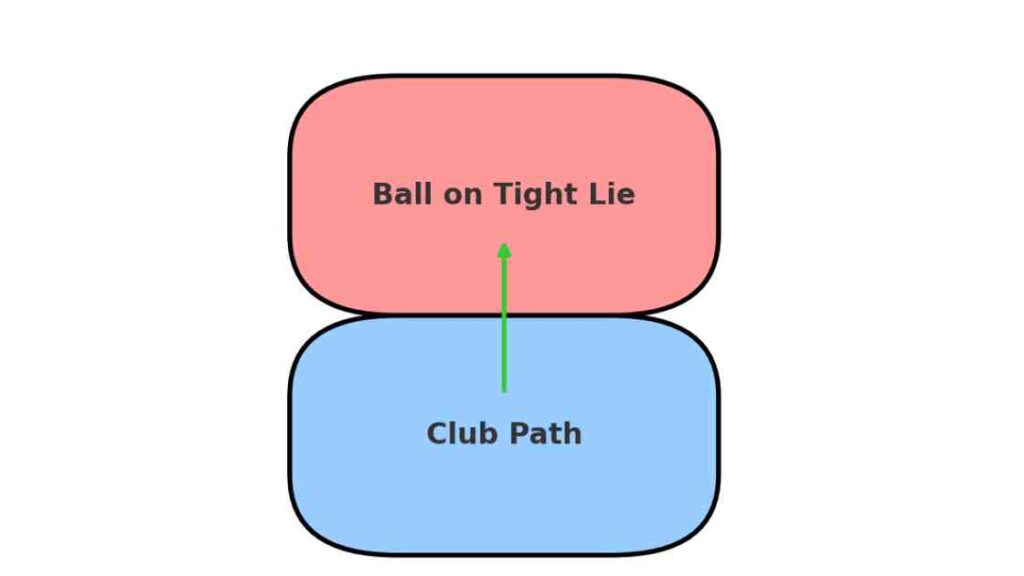
Chipping from the Rough
When chipping from the rough, it’s important to adjust your technique to ensure the ball gets out cleanly.
- Open the Clubface: Open the clubface slightly to increase the loft and help the club glide through the grass.
- Accelerate Through Impact: Commit to the shot and accelerate through impact to ensure the club doesn’t get caught in the rough.
- Use More Loft: Consider using a sand wedge or lob wedge for extra height and control.
Mental Preparation
Mental preparation is a key component of a successful short game. Here are some tips to help you stay focused and confident.
Visualization
Visualization is a powerful tool that can help you perform better on the course.
Visualize the Shot: Before you hit the shot, visualize the entire process from setup to follow-through. See the ball landing softly on the green and rolling towards the hole.
Positive Affirmations: Use positive affirmations to build confidence. Tell yourself, “I can make this shot,” or “I’ve practiced this, and I know what to do.
Mental Preparation Techniques
- Visualization
- Positive Affirmations
- Deep Breathing
- Routine Establishment
Establishing a Routine
Having a consistent routine can help you stay focused and calm under pressure.
Pre-Shot Routine: Develop a pre-shot routine that includes practice swings, visualization, and deep breaths.
Stick to the Routine: Use this routine consistently to build confidence and reduce anxiety.
Sample Pre-Shot Routine
| Step | Description |
| Practice Swings | Take 2-3 practice swings focusing on form |
| Visualization | Visualize the shot from start to finish |
| Deep Breaths | Take 2-3 deep breaths to calm nerves |
| Address the Ball | Step up to the ball and get into position |
| Execute the Shot | Commit to the shot and follow through |
Fine-Tuning Your Approach
Fine-tuning your approach involves making small adjustments to your technique and strategy to achieve better results.
Analyzing Your Lie
Before you hit a chip shot, it’s important to analyze the lie of the ball.
Assess the Grass: Look at the type and length of grass around the ball. Is it short or long? Wet or dry?
Evaluate the Slope: Determine if you’re on an uphill, downhill, or sidehill lie.
Choose the Right Club: Based on your assessment, choose the club that will give you the best chance of success.
Lie Analysis and Club Selection
| Lie Type | Club Choice | Technique Adjustment |
| Tight Lie | Pitching Wedge | Shallow angle of attack |
| Rough | Sand Wedge | Open clubface, accelerate |
| Uphill | Lob Wedge | Weight on back foot |
| Downhill | Nine Iron | Weight on front foot, steep |
Practicing Under Pressure
Simulate on-course pressure during practice to improve your performance in real situations.
Create Challenges: Set up challenging scenarios during practice, such as difficult lies or targets.
Track Progress: Keep track of your performance in these scenarios to monitor improvement.
Reward Success: Reward yourself when you successfully complete a difficult shot to build confidence.
Pressure Practice Drills
- Chipping Contest with Friends
- Timed Chipping Drills
- Target Practice with Rewards
- Simulated On-Course Scenarios
Advanced Tips for Lower Scores
To round off your short game mastery, here are some advanced tips that will help you lower your scores.
Clubface Awareness
Having a keen awareness of your clubface position can significantly improve your chipping accuracy.
Check Clubface Position: Regularly check your clubface position during practice to ensure it’s square to the target.
Adjust for Wind: Make small adjustments to your clubface based on wind conditions.
Distance Control
Mastering distance control is crucial for successful chipping.
- Vary Swing Length: Practice hitting chips with different swing lengths to control distance.
- Use a Consistent Tempo: Maintain a consistent tempo throughout your swing to ensure accurate distance control.
Distance Control Drills
- Ladder Drill: Set up targets at varying distances and try to land the ball at each target.
- Clock Drill: Visualize a clock face and use different positions on the clock to control swing length.
- One-Club Drill: Use one club and practice hitting different distances by varying your swing.
FAQs
What is the best chipping technique in golf?
The best chipping technique in golf involves a few key fundamentals:
- Stance and Setup: Position your feet close together, with your weight slightly on your front foot (about 60-70%). The ball should be positioned slightly back in your stance, towards your back foot.
- Grip: Use a light grip pressure to maintain feel and control. A standard golf grip is fine, but some prefer a slightly firmer grip for better control.
- Club Selection: Choose a club that suits the shot you want to play. A pitching wedge or sand wedge is common for higher, softer chips, while a 7-iron or 8-iron can be used for lower, running chips.
- Swing: Keep your hands ahead of the clubface at impact. Focus on a smooth, controlled motion with minimal wrist action. Your backswing should be short and compact, with a follow-through that matches the length of the backswing.
- Practice: Repetition and consistency are key. Practice different types of chips, varying the club and the trajectory to get comfortable with various situations on the course.
How do I improve my chipping in golf?
To improve your chipping, follow these tips:
- Practice Regularly: Spend time on the practice green, working on your chipping from various lies and distances.
- Focus on Technique: Pay attention to your setup, stance, and swing mechanics. Video analysis can help you spot and correct flaws.
- Use Drills: Incorporate chipping drills into your practice routine. Drills such as the “ladder drill” or “circle drill” can help improve distance control and accuracy.
- Experiment with Clubs: Practice chipping with different clubs to understand how each one behaves and to build confidence in various situations.
- Get Feedback: Work with a golf instructor or get feedback from more experienced players to identify areas for improvement and to refine your technique.
What are the common mistakes in golf chipping?
Common mistakes in golf chipping include:
- Improper Stance: Standing too wide or with incorrect weight distribution can lead to poor contact.
- Overuse of Wrists: Excessive wrist action can cause inconsistent strikes and poor distance control.
- Scooping the Ball: Trying to lift the ball into the air rather than hitting down on it can result in thin or fat shots.
- Incorrect Club Selection: Using the wrong club for the situation can make it difficult to control distance and trajectory.
- Lack of Follow-through: Stopping the club abruptly after impact can cause a lack of consistency and poor distance control.
How do I chip the ball close to the hole?
- Read the Green: Assess the slope, speed, and any obstacles between you and the hole.
- Choose the Right Club: Select a club that will produce the desired trajectory and roll.
- Visualize the Shot: Picture the flight and roll of the ball before you make your swing.
- Control Your Distance: Focus on a smooth, controlled swing with consistent tempo. Use practice swings to gauge the necessary distance.
- Aim for a Landing Spot: Pick a spot where you want the ball to land, allowing it to roll out to the hole. Adjust your aim and power based on this target.
What are the best drills for improving golf chipping?
Here are some effective drills for improving your chipping:
- Ladder Drill: Place several balls in a line, starting close to the hole and gradually moving further away. Chip each ball, trying to land them progressively closer to the hole.
- Circle Drill: Place a circle of tees or markers around the hole at a specific distance. Chip balls from various locations outside the circle, aiming to land them inside the circle.
- One-Handed Chips: Practice chipping with only your lead hand (left hand for right-handed players) to improve feel and control.
- Gate Drill: Set up two tees a few inches apart, creating a “gate” through which you must chip the ball. This helps with accuracy and clubface control.
- Different Lies Drill: Practice chipping from various lies, such as tight lies, rough, and uphill or downhill slopes, to build confidence in different conditions.
Conclusion
The chipping technique in golf is essential for improving your short game and lowering your scores. By focusing on using the bounce effectively, maintaining a natural triangle in your setup, and confidently committing to the shot even from challenging lies, you can achieve greater consistency and precision around the green.
Remember to practice with different clubs like the nine iron for optimal ball control and use golf shoes that provide stability during your chipping practice. With dedication to these fundamentals, you’ll elevate your game and approach each chip with confidence and skill.













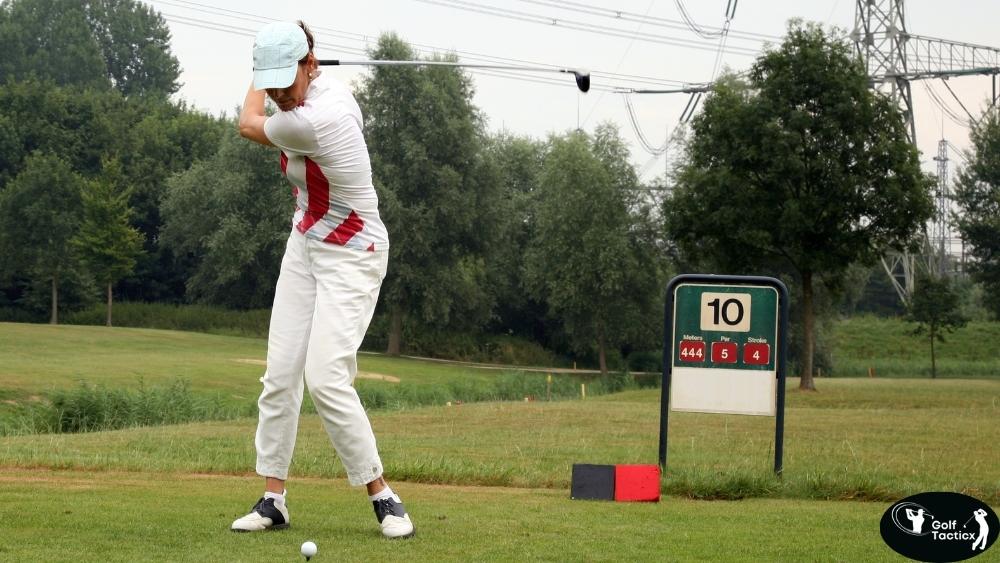


Leave a Reply